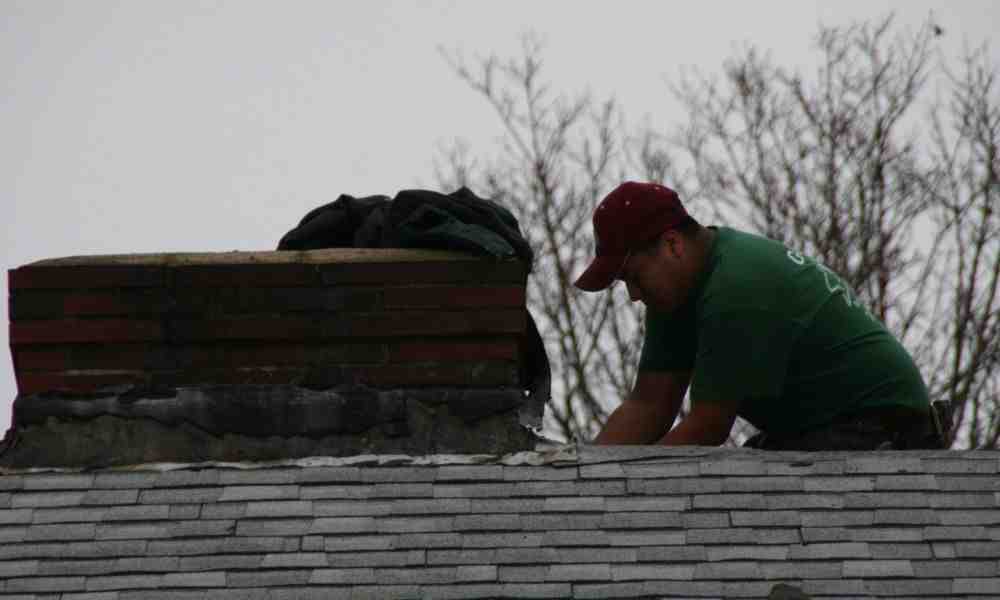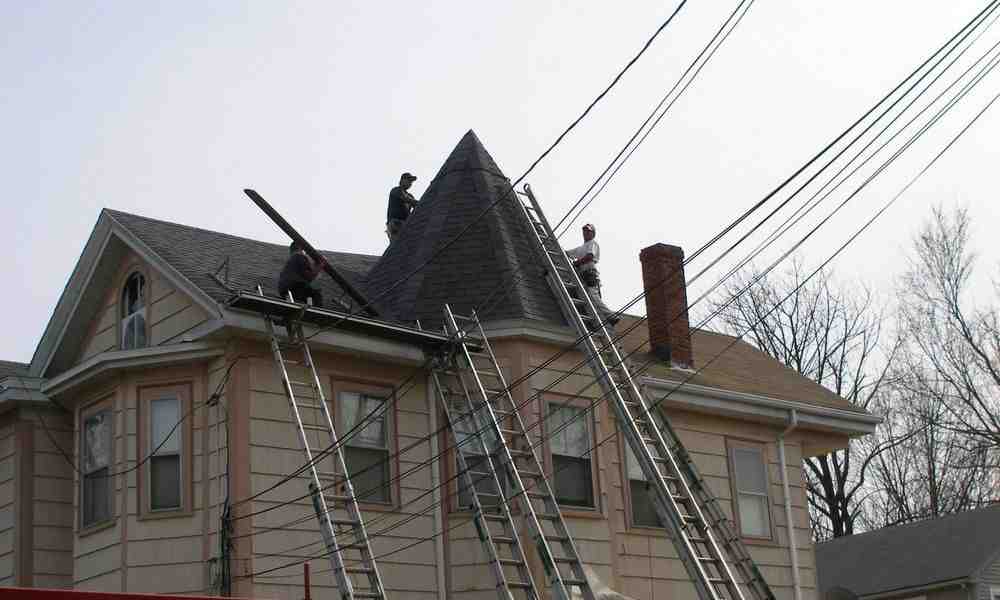Replace a Roof: 10 Crucial Tips for a Perfect 2024 Roof
Mastering Roof Replacement: Tips and Tricks for a Perfect Roof
Replacing a roof might seem overwhelming, but understanding the process can make it smooth and stress-free. Here’s a quick rundown to get you started:
- Roofing materials get delivered
- Initial walkthrough and setup
- Protect your property with precautions
- Tear off the old roof
- Inspect and replace compromised roof decking
- Install new roofing materials
- Clean up and inspect the final work
Roof replacement involves several steps, starting from delivering materials to the cleanup. You need to know what to expect, the cost implications, and the best materials for your home. At Golini Roofing, we focus on ensuring you have a seamless experience, right from the first day of inspection to the final cleanup.
I’m Jack Golini, with over 35 years of experience in roofing. With a commitment to craftsmanship and customer satisfaction, the team at Golini Roofing ensures your roof replacement is top-notch and hassle-free. Let’s dive into the essentials to give you a roof that stands the test of time.

Understanding Roof Replacement Costs
Replacing a roof involves various costs, and understanding these can help you make informed decisions. Let’s break down the factors affecting roof replacement costs and compare different roofing materials.
Factors Affecting Roof Replacement Costs
1. Roof Size:
The larger the roof, the more materials and labor are needed, increasing the overall cost. For example, a 1,000 sq. ft. roof might cost around $7,000, while a 3,000 sq. ft. roof could go up to $21,000.
2. Roofing Material:
The type of material you choose plays a significant role in cost. Here’s a quick look at some common options:
- Asphalt shingles: $4.25-$8.25 per sq. ft.
- Flat roofing materials: $5.50-$7.50 per sq. ft.
- Corrugated metal: $5.50-$11.50 per sq. ft.
- Aluminum shingles: $6-$16 per sq. ft.
- Cedar shingles: $8-$14.30 per sq. ft.
- Standing seam metal panels: $10-$17.05 per sq. ft.
- Steel shingles: $10-$20 per sq. ft.
- Concrete tiles: $12-$20 per sq. ft.
- Slate tiles: $12-$22 per sq. ft.
- Clay tiles: $12-$24.75 per sq. ft.
3. Labor Costs:
Labor can account for up to 60% of your total cost. This varies by region. For instance, labor charges in California can range from $40 to $60 per hour, while in Texas, it might be cheaper.
4. Permits:
Permits are often required for roof replacement, especially if structural work is involved. These can add several hundred dollars to your expenses, depending on the job’s scale and local regulations.
5. Geographic Location:
Where you live affects costs due to variations in labor rates, material availability, and permit fees. Areas with higher living costs will generally have higher roofing costs.
Cost Comparison of Different Roofing Materials
Choosing the right material for your roof is crucial. Here’s a comparison of costs for some popular options:
| Roofing Material | Price (for a 2,000-Square-Foot Home) |
|---|---|
| Asphalt shingles | $8,000 – $17,000 |
| Galvanized steel | $14,000 – $30,000 |
| Cedar shakes | $14,000 – $32,000 |
| Concrete tile | $15,000 – $40,000 |
| Aluminum | $16,000 – $34,000 |
| Slate tiles | $19,000 – $52,000 |
| Clay | $22,000 – $50,000 |
| Copper | $42,000 – $80,000 |
Asphalt Shingles: Affordable and versatile, but with a shorter lifespan of 15-30 years.
Galvanized Steel: Durable and weather-resistant, but more expensive than asphalt.
Cedar Shakes: Beautiful and energy-efficient, but require regular maintenance and are costly.
Concrete Tiles: Long-lasting but heavy, requiring strong structural support.
Aluminum: Reflective and cool in summer, but can be noisy during rain.
Slate Tiles: Luxurious and long-lasting, but expensive and fragile.
Clay Tiles: Eco-friendly and charming, but heavy and costly.
Copper: Unique and extremely durable, but the most expensive option.
Understanding these factors and cost comparisons can help you budget effectively for your roof replacement project. Next, we’ll dive into the roof replacement process to give you a clear roadmap from start to finish.
The Roof Replacement Process
Step-by-Step Guide to Replace a Roof
Replacing a roof might seem daunting, but breaking it down into manageable steps can make the process straightforward. Here’s a step-by-step guide to help you understand what to expect:
- Roofing Materials Delivery
The first step is getting all the roofing materials delivered to your home. This usually happens the afternoon before or the morning of the project. The materials should be unloaded on a paved surface near the roof access point to avoid damaging your lawn. - Initial Walkthrough
On the morning of your roof replacement, the roofer will conduct an initial walkthrough. They’ll take pictures of any noticeable damages around the roofline, such as torn window screens or dented gutters. This documentation helps clear up any confusion about pre-existing damage. - Property Protection
Before starting the tear-off, your roofer will set up precautions to protect your property. This includes attaching tarps to the roofline and leaning wooden boards against the exterior walls. These measures control where debris goes and make cleanup easier. - Tear-Off Process
The actual roof replacement starts with tearing off your old roof. The crew will work in sections, starting from the furthest corner and moving toward the dump trailer. While some team members tear off the old roof, others will pick up debris to ensure a clean work area. - Decking Inspection
After tearing off a section, the roof decking is inspected for any signs of rot or damage. If compromised decking is found, it must be replaced before new materials are installed. This step is crucial for the longevity of your new roof. - New Roof Installation
With the old roof removed and the decking inspected, it’s time to install the new materials. The process begins with installing the drip edge, followed by underlayment, and then the shingles. The crew will start from the bottom and work their way up to the ridge, finishing with ridge capping and roof vents. - Cleanup
Once the new roof is installed, the crew will clean up the worksite. They’ll blow off the roof, gutters, and downspouts to ensure all debris is removed. The ground crew will also use a strong magnet to pick up any loose nails, ensuring your yard is safe. - Final Inspection
The last step is a final inspection. The roofer will double-check the installation to ensure everything is properly done. They’ll also walk around your home to make sure no debris or nails are left behind. If you’re satisfied with the work, you’ll receive your warranty information and make the final payment.
Common Issues During Roof Replacement
Even with a well-planned process, some issues can arise during a roof replacement. Here are a few common problems and how to handle them:
- Weather Delays: Bad weather can halt the project. It’s essential to choose a roofer who monitors the weather and can adjust the schedule accordingly.
- Unexpected Damage: Sometimes, hidden damage is discovered during the tear-off. This can extend the project and increase costs, so it’s wise to have a contingency budget.
- Material Shortages: Supply chain issues can cause delays. A reputable roofer will keep you informed and manage expectations if materials are delayed.
- Installation Errors: Mistakes can happen. Ensure you hire experienced contractors who follow best practices to minimize errors.
Understanding these steps and potential issues can help you navigate the roof replacement process smoothly. Next, we’ll explore how to choose the right roofing material for your home.
Choosing the Right Roofing Material
Choosing the right roofing material is crucial for the longevity, aesthetics, and overall performance of your roof. Below, we’ll break down the pros and cons of popular roofing materials and guide you on the best roofing materials for different climates.
Pros and Cons of Popular Roofing Materials
Asphalt Shingles
- Durability: Lasts about 20-30 years.
- Cost: Most cost-effective option.
- Aesthetics: Available in various colors and styles, but generally has a flat appearance.
- Maintenance: Low maintenance.
- Environmental Impact: Made from petroleum products; not the most eco-friendly.
Metal Roofing
- Durability: Can last up to 70 years.
- Cost: Expensive upfront but cost-effective over time.
- Aesthetics: Available in styles that mimic other materials like shingles or tiles.
- Maintenance: Low maintenance.
- Environmental Impact: Often made from recycled materials and fully recyclable.
Wood Shingles
- Durability: Can last up to 30 years.
- Cost: Expensive.
- Aesthetics: Offers a natural, rustic look.
- Maintenance: Requires regular maintenance to prevent mold and rot.
- Environmental Impact: Made from natural wood, but not ideal for fire-prone areas.
Clay Tiles
- Durability: Can last up to 50 years or more.
- Cost: Expensive.
- Aesthetics: Traditional, often seen in Spanish-style homes.
- Maintenance: Low maintenance but may require structural support due to weight.
- Environmental Impact: Natural material but heavy.
Concrete Tiles
- Durability: Similar to clay tiles, can last up to 50 years.
- Cost: Less expensive than clay tiles but still pricey.
- Aesthetics: Can mimic clay tiles and other materials.
- Maintenance: Low maintenance.
- Environmental Impact: Made from natural materials but heavy.
Slate Tiles
- Durability: Can last over 50 years.
- Cost: Very expensive.
- Aesthetics: High-end, elegant appearance.
- Maintenance: Difficult to repair and very slippery.
- Environmental Impact: Heavy and requires significant energy to produce.
Best Roofing Materials for Different Climates
Hot Climates
- Metal Roofing: Reflects sunlight, reducing cooling costs.
- Clay and Concrete Tiles: Excellent for hot climates due to their thermal properties.
Cold Climates
- Metal Roofing: Ideal for shedding snow and ice.
- Asphalt Shingles: Effective but may require more maintenance.
Coastal Areas
- Metal Roofing: Resistant to saltwater corrosion.
- Asphalt Shingles: Affordable option but may need frequent replacement.
Areas with Heavy Snowfall
- Metal Roofing: Best for snow and ice shedding.
- Slate Tiles: Durable and can handle heavy snow load but ensure your structure can support the weight.
Choosing the right material involves balancing durability, cost, aesthetics, and environmental impact with your specific climate needs. Up next, we’ll dive into the debate of DIY vs. professional roof replacement.
DIY vs. Professional Roof Replacement
Why Hire a Professional Roofing Contractor
Expertise and Efficiency: Professional roofing contractors bring years of experience and specialized knowledge to the table. They can quickly identify and fix issues that a DIYer might miss. For example, Golini Roofing has a track record of efficiently handling complex roof replacements, ensuring that every step is done correctly.
Safety: Roofing is risky. Climbing ladders, handling heavy materials, and working at heights can lead to serious injuries. Professionals are trained in safety protocols and have the right equipment to minimize risks. According to the research, roofing accidents result in numerous severe injuries annually, some of which can be fatal.
Warranty and Insurance: Reputable contractors offer warranties on both materials and workmanship. This means if something goes wrong, they’ll fix it at no extra cost. Additionally, professional roofers carry insurance, protecting you from liability in case of accidents on your property.
Quality Assurance: Proper installation is critical for a roof’s longevity. Incorrectly installed roofs can lead to leaks, structural damage, and voided warranties. Professionals follow manufacturer guidelines to ensure your new roof is installed to the highest standards.
DIY Roof Replacement: What You Need to Know
Tools Required: If you decide to replace a roof yourself, you’ll need a range of tools, including a hammer, roofing nails, utility knife, roofing cement, and a ladder. Make sure you have all the necessary materials before starting.
Safety Gear: Safety should be your top priority. Equip yourself with non-slip shoes, a safety harness, and gloves. Always work with a partner, especially when handling heavy materials.
Permit Requirements: Check with your local building authority to see if you need a permit to replace your roof. Skipping this step can lead to fines and complications down the line.
Step-by-Step Process:
1. Materials Delivery: Ensure all materials are delivered and ready to go.
2. Property Protection: Use tarps to protect your landscaping and property.
3. Tear-Off: Remove the old roofing materials carefully.
4. Decking Inspection: Check for any damage to the decking and replace if necessary.
5. New Roof Installation: Follow manufacturer instructions meticulously to install the new roof.
6. Cleanup: Clear all debris and leftover materials from your property.
7. Final Inspection: Inspect your work to ensure everything is properly installed.
Cost Comparison: While DIY can save you money on labor costs (around $2 to $7 per square foot), it’s important to consider the potential for mistakes. Errors in installation can lead to costly repairs down the road. Professionals like Golini Roofing provide a detailed written estimate, so you know exactly what to expect cost-wise.
Time Investment: Replacing a roof is time-consuming. For an inexperienced DIYer, the project can take several weeks. Professionals can often complete the job in a few days, minimizing disruption to your daily life.
Safety Concerns: The dangers of roofing work cannot be overstated. If you’re not comfortable with heights or lack the necessary skills, it’s best to leave it to the pros.
Hiring a professional roofing contractor ensures your roof replacement is done safely and correctly, providing you with peace of mind and a roof that will last for decades.

Next, we’ll address some frequently asked questions about roof replacement to help you make informed decisions.
Frequently Asked Questions about Roof Replacement
How much does it cost to replace 1000 sq ft of roof?
Replacing a 1000 sq ft roof can cost between $4,000 and $40,000, depending on the materials used and the complexity of the job. Asphalt shingles are the most affordable option, generally costing about $7,000 for this size. On the high end, materials like slate can push the cost up to $40,000.
Factors affecting costs:
- Material Choice: Asphalt shingles are cheaper than metal or slate.
- Labor Rates: Labor can account for up to 60% of the total cost.
- Additional Repairs: Fixing underlying issues can add to the expense.
What is the cheapest roof to replace?
The most cost-effective roofing option is asphalt shingles, which typically cost between $1 and $4 per square foot. They are easy to install and can last 12-30 years, making them a popular choice for budget-conscious homeowners.
Other affordable options:
- Roll Roofing: Costs $1 to $2 per square foot and lasts 5-8 years.
- Metal Panels: Although slightly more expensive, they offer durability and can be a cost-effective option in the long run.
When is the best time to replace a roof?
The ideal seasons for roof replacement are late autumn and early spring. During these times, the weather is generally mild, which is optimal for roofing work.
Why these seasons?:
- Temperature: Adhesives and sealants set better in moderate temperatures.
- Weather: Less risk of extreme weather conditions disrupting the project.
- Availability: Contractors may have more availability compared to peak summer or winter months.
Avoid:
- Winter: Frigid temperatures can make materials brittle and harder to work with.
- Summer: Extreme heat can affect the setting of adhesives and make the work environment uncomfortable.
By planning your roof replacement during the optimal seasons, you can ensure better results and fewer delays.
Next, we’ll dive deeper into choosing the right roofing material for your home.
Conclusion
Replacing a roof is a big investment, but with the right approach and expert guidance, it can be a smooth and rewarding process. At Golini Roofing, we pride ourselves on delivering top-notch service and ensuring your new roof stands the test of time.
Roof Maintenance and Regular Inspections
Regular roof maintenance is crucial for extending the life of your roof and avoiding costly repairs. Simple tasks like clearing debris, checking for damage, and cleaning gutters can make a huge difference. Scheduling professional inspections at least twice a year helps catch issues early before they become major problems.
Professional Advice
When it comes to roof replacement, professional advice is invaluable. Our team at Golini Roofing is always ready to assist you with any questions or concerns. Whether it’s choosing the right materials or understanding the replacement process, we’re here to help.
Why Choose Golini Roofing
- Expertise: With years of experience, we ensure every roof is installed correctly and efficiently.
- Safety: We prioritize safety for both our crew and your property.
- Warranty: Our work comes with a warranty, giving you peace of mind.
- Efficiency: We aim to complete projects on time and within budget.
By partnering with Golini Roofing, you’re choosing quality and reliability. For more information on our roof replacement services, visit our Roof Replacement Service Page.
Let’s ensure your home is protected and looks great for years to come!

